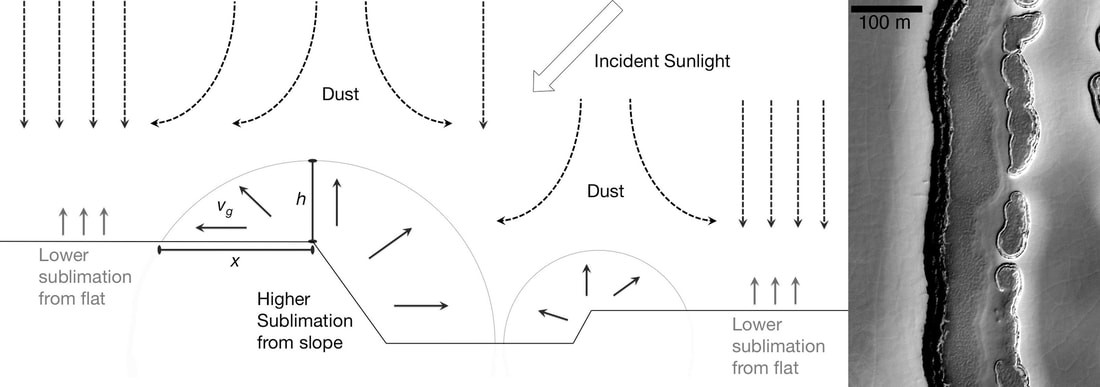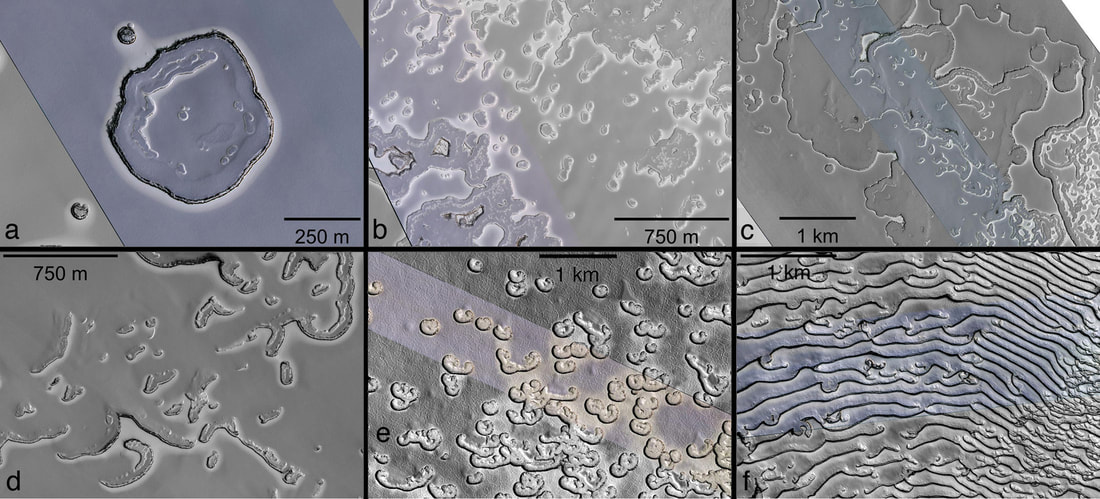On Mars' South Polar Residual Cap (SPRC), I studied unique, spatially localized changes in brightness. This cap is the top layer of Mars' south polar cap, and is composed entirely of carbon dioxide ice, interacting with the Martian climate on timescales of one Mars Year to many Martian decades. Through observational analyses of images, spectra and reflectance modelling, we concluded that the changes in brightness were caused by unusual amounts of dust in the atmosphere brought about by large regional and global dust storms on the planet every few years.

Schematic of our conceptual model for the formation of SPRC halos. The higher sublimation rate on a slope due to lower solar incidence angles raises the partial pressure of CO2 in the local near-surface atmospheric layer. This pressure difference creates a sublimation-driven outflow of gas that blows settling dust grains away from the slope and keeps areas near the edges of pits relatively dust-free with respect to the surroundings. Wherever steep opposing walls were observed, halos were seen atop both mesas
